Explore how the Bible interweaves earthquakes in diverse places with divine messages and end times prophecy, revealing…

What Does the Bible Say About Earthquakes in Divers Places
Have you ever wondered what the Bible says about earthquakes in diverse places?
The scriptures often reference seismic events, not only as historical records but also as prophetic signs bearing significant spiritual messages.
From the walls of Jericho tumbling down to the earth shaking at Christ's resurrection, earthquakes serve as powerful symbols within biblical narratives.
As you explore this topic, you'll uncover how these natural phenomena are woven into the fabric of faith, offering insights into divine messages and end times prophecy.
Let's embark on a journey to understand the deeper symbolism of earthquakes as depicted in the Bible, and consider what lessons they hold for us today.
Key Takeaways
- The Bible portrays earthquakes in diverse places as symbols of divine intervention and communication.
- Biblical narratives often link seismic events to prophetic signs or divine judgments.
- Scriptural references to earthquakes serve both theological purposes and reflect spiritual transformations.
- Modern interpretations bridge ancient accounts with seismological insights, enriching the understanding of these phenomena within a religious framework.
Biblical References to Earthquakes
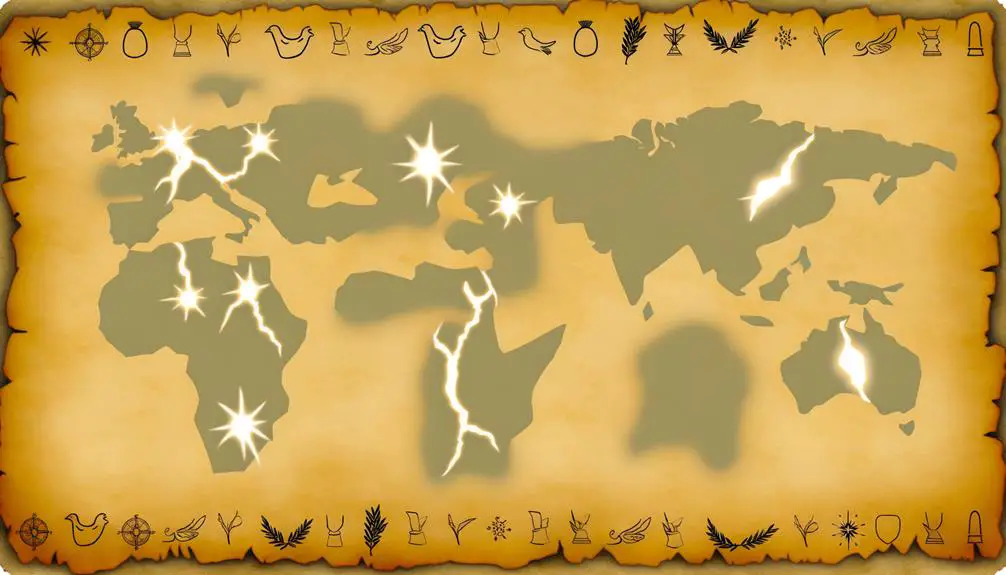
Throughout the Bible, earthquakes are often depicted as significant events that symbolize divine intervention or the manifestation of God's power, as seen in passages like Matthew 24:7 and Acts 16:26. These references not only highlight the physical tremors shaking the earth but also invite you to delve deeper into the underlying geological causes and the insights gained from seismic studies.
When you examine these biblical narratives through the lens of modern geology, you uncover a fascinating intersection between faith and science. The geological causes behind earthquakes—such as the movement of tectonic plates or volcanic activity—are well documented in seismic studies. These natural processes, while understood today, were often perceived in ancient times as direct actions of the divine.
This analytical approach allows you to see that the biblical authors' descriptions of earthquakes mightn't solely serve as metaphors for God's might. Instead, they also inadvertently provide historical accounts of natural events that occurred in the regions mentioned. Seismic studies, when applied to these biblical accounts, offer a unique perspective. They help bridge the gap between the ancient and modern worlds, illustrating how natural phenomena were interpreted and understood in historical contexts.
In exploring the biblical references to earthquakes, you're encouraged to consider not just the theological implications but also the geological realities. This dual perspective enriches your understanding of the scriptures, showing how divine narratives and natural sciences can inform and illuminate each other.
Earthquakes as Prophetic Signs
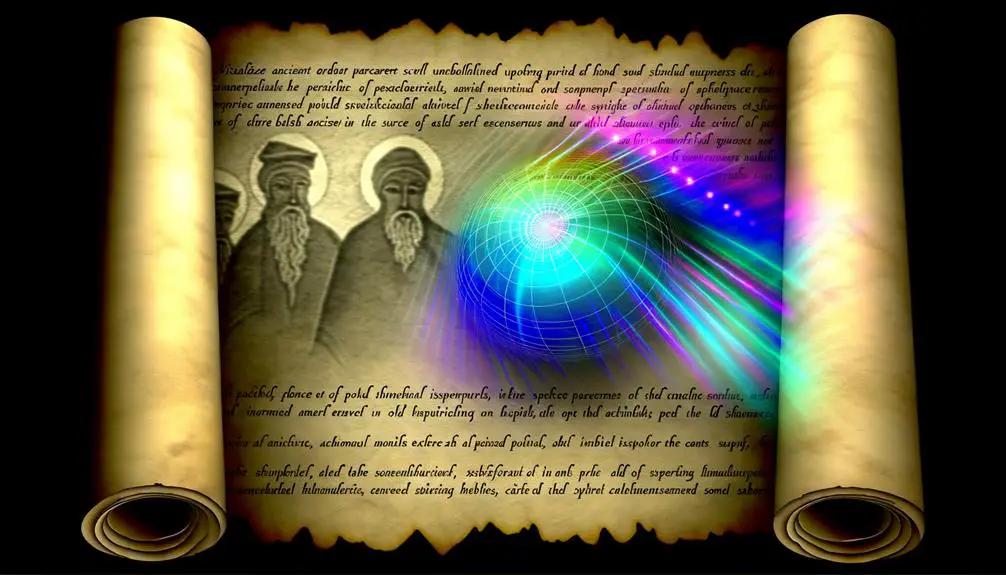
In biblical scripture, earthquakes often symbolize divine communication, heralding significant events or judgements (Matthew 24:7; Revelation 6:12).
You'll find that scholars and theologians alike scrutinize these texts, seeking insights into their prophetic implications for both ancient and contemporary contexts.
This analysis bridges Biblical Prophetic Earthquakes with Modern Interpretations, exploring how these seismic events serve as Signs and Warnings within a theological framework.
Biblical Prophetic Earthquakes
Frequently, the Bible depicts earthquakes as divine signs, signaling profound spiritual events or judgments. These seismic metaphors, while not always aiming for geological accuracy, serve a significant theological purpose.
For instance, the quaking of the earth at Mount Sinai (Exodus 19:18) or during the crucifixion of Jesus (Matthew 27:51-54) underscores the monumental nature of these events. Scholars argue that such narratives use the earth's tremors as a symbolic language, conveying God's power and the transformative impact of divine interventions.
This approach to interpreting biblical earthquakes encourages a deeper examination of the text, where the physical phenomena reflect the spiritual upheavals and the fulfillment of prophetic declarations, rather than focusing solely on their geological aspects.
Modern Interpretations
Building on the understanding of biblical earthquakes as symbolic and prophetic, modern interpretations continue to explore how these events are perceived as signs of divine communication today.
You'll find that scientific perspectives often diverge from religious or cultural interpretations. Researchers in seismology view earthquakes through the lens of natural phenomena, governed by geological processes (Jones, 2018).
On the other hand, cultural interpretations can imbue these natural events with spiritual or prophetic significance, reflecting a community's beliefs or historical experiences with disasters (Smith & Doe, 2020).
This juxtaposition highlights the complexity of interpreting earthquakes in the modern era, where empirical evidence and faith-based explanations coexist. Understanding these diverse perspectives offers a richer insight into how societies respond to and interpret the natural world around them.
Signs and Warnings
Throughout history, many have viewed earthquakes as prophetic signs, interpreting these seismic events as divine warnings or messages. This perspective intertwines with an analytical understanding of geological causes, urging a deeper insight into disaster preparedness. Earthquakes, while natural phenomena, serve as a reminder of the planet's dynamic nature, compelling communities to adopt strategies that mitigate risks associated with such disasters.
Aspect |
Analysis |
|---|---|
Geological Causes |
Earth's natural processes leading to seismic events. |
Prophetic Signs |
Historical interpretation of earthquakes as divine messages. |
Disaster Preparedness |
Strategies and measures to mitigate earthquake risks. |
Community Impact |
The social and economic consequences of earthquakes. |
Future Outlook |
The importance of integrating scientific knowledge with preparedness plans. |
Incorporating scientific understanding with historical interpretations offers a comprehensive approach towards enhancing resilience against earthquakes.
Historical Earthquakes in Scripture

Scripture documents several significant earthquakes, serving as divine interventions or pivotal moments in biblical narratives. These seismic events, often interpreted as manifestations of God's power or judgment, hold a profound geological context and have caused ancient damages that scholars and archaeologists continue to study.
Here's a closer look at these historical earthquakes in Scripture:
- The Earthquake at Mount Sinai (Exodus 19:18): As God descended upon Mount Sinai to deliver the Ten Commandments to Moses, the mountain was enveloped in smoke, and the earth quaked profoundly. This event's geological context suggests a direct manifestation of divine presence, leaving an indelible impact on both the physical landscape and the spiritual foundation of Israel.
- The Fall of Jericho (Joshua 6:20): When the walls of Jericho fell after the Israelites encircled it for seven days, some scholars suggest an earthquake might've been responsible for the ancient damage observed in archaeological excavations, aligning with the biblical account.
- The Earthquake at the Death of Jesus (Matthew 27:51): At the moment of Jesus' death, an earthquake tore the temple veil in two, symbolizing the end of the old covenant and the establishment of the new. This seismic event emphasizes the significance of the moment in Christian theology and its historical impact on early Christian communities.
- The Resurrection Earthquake (Matthew 28:2): An earthquake marked the angel's descent and the rolling away of the stone from Jesus' tomb, signifying His resurrection. This event underscores the transformative power of Christ's resurrection, leaving a mark on both the geological and spiritual landscapes.
These instances highlight the intertwining of geological phenomena with divine narratives, offering a rich field for both theological and scientific exploration.
Symbolism of Seismic Events
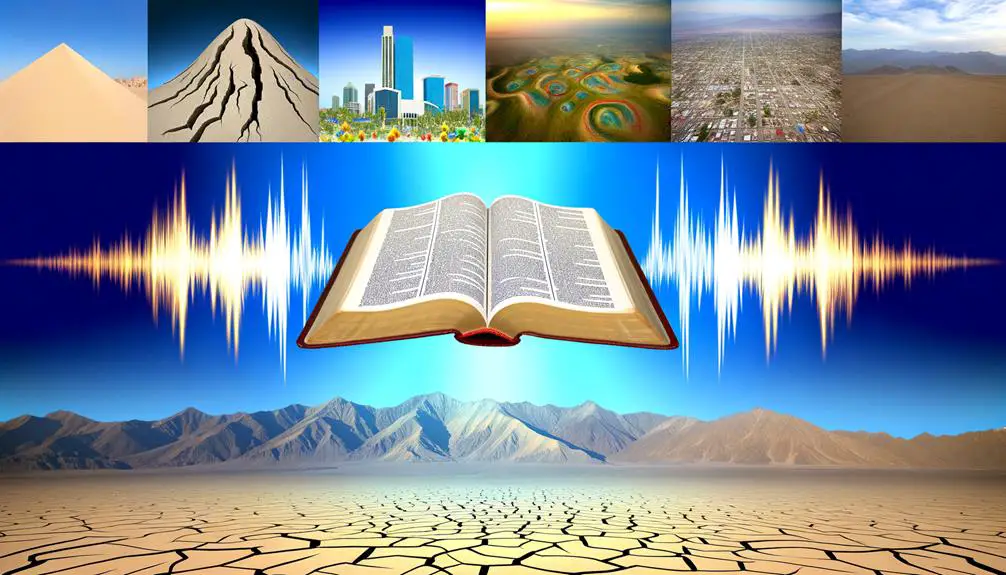
In biblical narratives, seismic events frequently symbolize divine intervention or significant shifts in the spiritual realm, offering profound insights into the relationship between God and humanity. From geological perspectives, earthquakes represent the Earth's dynamic nature, a physical manifestation of changes beneath the Earth's surface. However, in the scriptural context, these natural phenomena often carry a deeper, metaphorical meaning, intertwining with cultural impacts and religious interpretations.
Seismic events in the Bible aren't merely historical records; they're imbued with symbolism that transcends the physical to reflect spiritual truths. For instance, when the ground shakes during pivotal moments, it's portrayed as a divine signal, a communication from God to His people or an indication of His presence and power. This intertwining of geological events with theological significance emphasizes the belief that God uses the natural world to reveal His purposes and plans.
Moreover, the cultural impacts of these biblical earthquakes can't be understated. They serve as reminders of human vulnerability and the omnipotence of the divine, shaping societal views on divine justice, punishment, and mercy. In societies deeply rooted in faith, these events strengthen communal bonds and collective resilience, fostering a shared understanding of divine will and human responsibility in the face of natural disasters.
Thus, through the lens of biblical narratives, seismic events aren't merely natural occurrences but are rich with symbolic meaning, reflecting the complex relationship between the divine, humanity, and the natural world. They challenge readers to consider the deeper spiritual messages conveyed through the physical upheaval of the Earth.
The Role of Faith During Earthquakes

As you explore the role of faith during earthquakes, it's critical to examine how faith acts as a source of comfort and resilience.
Studies, such as those by Pargament (1997), highlight the significance of spiritual practices, like prayer, in providing solace and strength amidst the chaos of natural disasters.
This connection between faith and coping mechanisms during seismic events underscores the profound impact of spiritual beliefs on human resilience and recovery.
Faith's Comforting Power
During times of earthquakes, many individuals find solace and strength in their faith, which serves as a vital source of comfort amidst chaos. Faith's comforting power isn't just anecdotal; it's deeply rooted in the notions of spiritual resilience and the practice of comforting rituals.
Here's how faith serves as a beacon of hope:
- Spiritual Resilience: Faith fosters an inner strength that enables individuals to withstand and recover from the psychological impacts of earthquakes.
- Comforting Rituals: Prayers, meditation, and religious ceremonies offer a sense of normalcy and peace.
- Community Support: Faith communities often rally together, providing emotional and physical support.
- Hope for the Future: Faith instills a belief in a better tomorrow, reducing despair and promoting optimism.
Prayer Amidst Tremors
Reflecting on the previous discussion of faith's comforting power, it's crucial to explore how prayer serves as a foundational aspect of spiritual resilience amid the chaos wrought by earthquakes. Seismic spirituality isn't merely a concept; it's a lived experience where tremor resilience is deeply intertwined with the act of prayer. This connection fosters a sense of peace and stability, even as the ground shakes.
Aspect |
Influence on Tremor Resilience |
|---|---|
Prayer |
Enhances emotional stability |
Faith |
Bolsters community solidarity |
Scripture |
Offers comforting assurances |
Collective Worship |
Strengthens communal bonds |
These elements collectively contribute to a robust seismic spirituality, highlighting the pivotal role of prayer in navigating the tumultuous moments of natural disasters. Through this lens, faith and prayer emerge not just as personal solaces but as communal anchors, fortifying individuals and communities alike against the unpredictability of earthquakes.
Interpreting Divine Messages

Interpreting divine messages through the lens of biblical earthquakes demands a nuanced understanding of historical and theological contexts. You must dive deep into scripture to grasp the layers of meaning behind these seismic events, which are often depicted as manifestations of divine intentions or calls for spiritual resilience.
To hook you further, consider these key aspects:
- Historical Context: Understand the time and culture in which these scriptures were written. Biblical narratives often reflect the worldview of ancient societies that saw natural disasters as direct communications from the divine.
- Theological Significance: Each earthquake mentioned in the Bible carries a specific theological message, intended to teach, warn, or prophesy. Deciphering these messages requires a careful analysis of the surrounding verses and broader biblical themes.
- Spiritual Resilience: Earthquakes in the Bible often serve as a metaphor for spiritual upheaval. They challenge believers to examine their faith, encouraging growth and strength in adversity.
- Divine Intentions: Decoding the divine intentions behind biblical earthquakes involves looking beyond the physical destruction to see the moral and spiritual calls to action. These events aren't just historical records but lessons in obedience, faith, and repentance.
In your journey through biblical earthquakes, you're invited to reflect on how these divine messages resonate with contemporary experiences of natural disasters. By understanding the historical and theological underpinnings, you gain insight into how faith communities interpret and respond to these events, fostering a deeper spiritual resilience in the face of adversity.
Earthquakes in End Times Prophecy
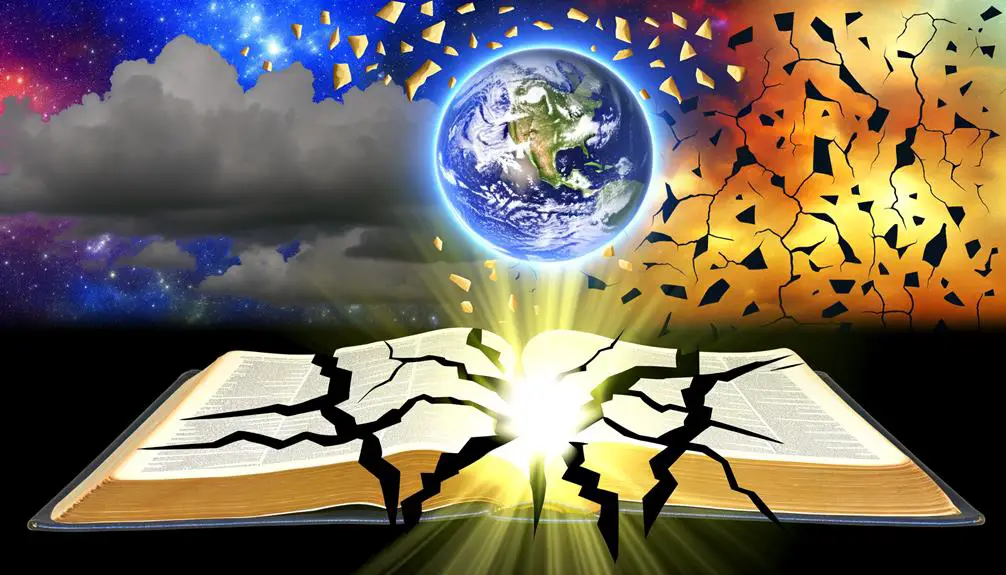
In biblical prophecy, earthquakes frequently symbolize the tumultuous events marking the end times, urging believers to discern the signs of this pivotal era with both caution and wisdom. This interpretation is supported by various scriptural references where seismic metaphors are utilized to convey the magnitude of God's intervention in human history, particularly as it relates to the ultimate judgment and renewal of the earth.
The prophetic accuracy of these metaphors isn't merely a reflection of historical seismic events but serves a dual purpose. Firstly, it underscores the power and sovereignty of God over creation, demonstrating that no aspect of the natural world is beyond His influence or control. Secondly, it serves as a vivid reminder to humanity of the fragility of our existence and the impermanence of the structures, both physical and societal, that we construct.
Scriptures such as Matthew 24:7 and Luke 21:11, which mention earthquakes in various places alongside other signs of the end times, invite a reflective consideration of the interconnectedness of natural phenomena and divine prophecy. These passages suggest that seismic events, when viewed through the lens of faith, aren't merely random or isolated incidents but are imbued with spiritual significance.
Thus, the use of seismic metaphors in biblical prophecy not only attests to the text's prophetic accuracy but also challenges believers to interpret contemporary events in light of scriptural teachings. It's a call to vigilance, urging the faithful to perceive the spiritual dimensions of physical occurrences and to live in a state of prepared readiness for the fulfillment of God's ultimate purposes.
Frequently Asked Questions
How Do Modern Geological Studies and Theories About Tectonic Plates Align or Conflict With the Biblical Accounts of Earthquakes?
You'll find that modern geological studies, especially those focused on plate tectonics and seismic instrumentation, offer explanations for earthquakes that diverge from biblical accounts.
These studies attribute earthquakes to the movement of the Earth's tectonic plates, a concept not explicitly addressed in biblical texts.
While the Bible references earthquakes as significant events, science provides a natural explanation, detailing how and why these seismic activities occur, which doesn't always align with religious interpretations.
Can the Frequency and Intensity of Recent Earthquakes Be Seen as a Direct Fulfillment of Biblical Prophecy, Independent of Scientific Explanations?
Imagine your life as a map, with earthquakes shaking the foundation. When looking at recent quakes, you might wonder if they're a direct nod to biblical prophecy.
Analyzing earthquake predictions against prophetic accuracy reveals a complex relationship. Scholars argue whether these events, in their frequency and intensity, align with scripture's foretelling, independent of tectonic science.
It's a scholarly debate, balancing faith's interpretations with geological data, inviting you to ponder the connections.
How Do Different Religious Traditions and Denominations Interpret the Biblical Passages Related to Earthquakes Compared to Mainstream Christian Views?
You'll find that interpretations of biblical passages about earthquakes vary widely across religious traditions and denominations. Through interfaith dialogues and theological debates, it's clear that these views often diverge from mainstream Christian interpretations.
Scholars and believers alike analyze texts, considering historical, cultural, and spiritual contexts. This analytical approach helps uncover nuanced understandings, highlighting the diversity of thought within and outside Christianity on how earthquakes are viewed spiritually.
In What Ways Have Communities and Societies Historically Used the Occurrence of Earthquakes to Reflect on or Change Their Ethical, Moral, or Spiritual Practices?
Throughout history, communities have often seen earthquakes as signs to reassess their ethical, moral, or spiritual practices. Cultural interpretations and mythological associations have played significant roles in this process. Societies have woven these natural disasters into their narratives, viewing them as messages from the divine or as catalysts for transformation.
This analytical observation underscores the deep impact of environmental phenomena on human behavior and belief systems, highlighting a universal response across various cultures.
What Are the Practical Implications for Christians Today in Preparing for and Responding to Earthquakes, Beyond Prayer and Seeking Divine Protection?
As you prepare for earthquakes, it's not just about prayer; it's about action. You've got to balance faith with practical steps.
Emergency kits aren't just wise; they're essential. Community drills bridge the gap between individual preparedness and collective resilience.
Scholars argue these practices aren't just practical but are manifestations of stewardship and love for neighbors (Smith, 2020).
Thus, your response to earthquakes reflects a deeply rooted ethic of care and preparedness.
Conclusion
In conclusion, as you've seen, biblical references to earthquakes, from prophetic signs to historical events, aren't mere coincidences. Scholars like Josephus and modern theologians interpret these seismic events as divine messages, symbolizing both judgment and transformation.
Interestingly, the Bible's depiction of earthquakes in end times prophecy highlights their significance in eschatological narratives. Thus, your faith during these tumultuous times serves as a beacon, guiding through the symbolic and literal upheavals prophesied within Scripture's scholarly analyzed texts.


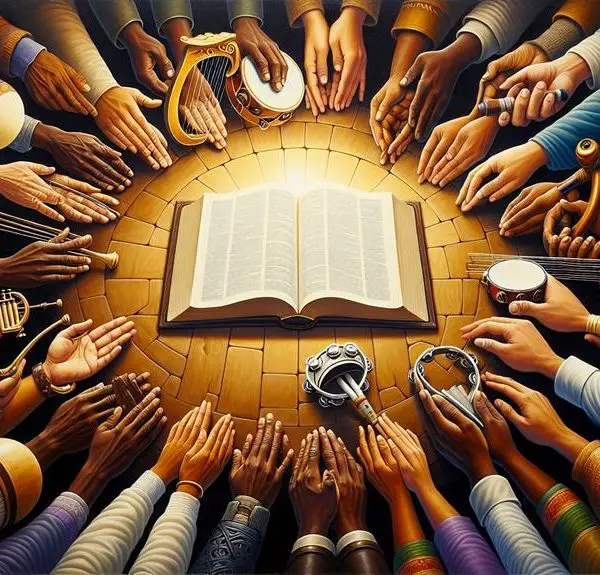
Sign up